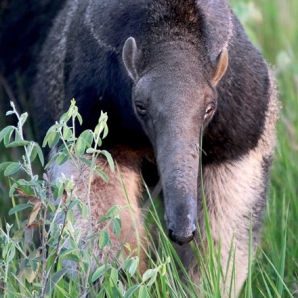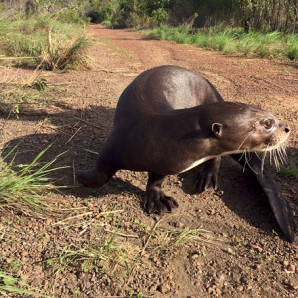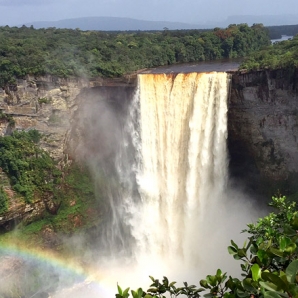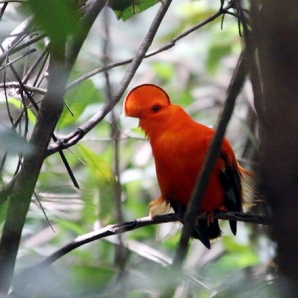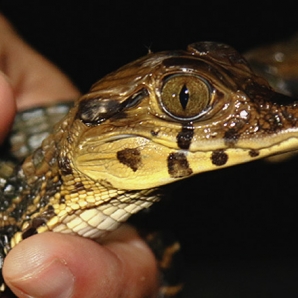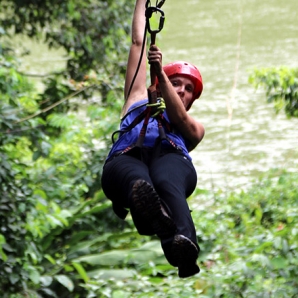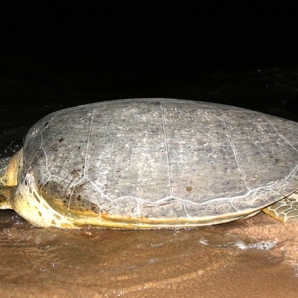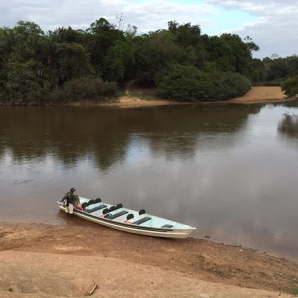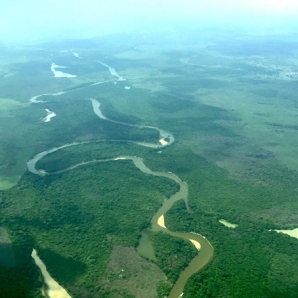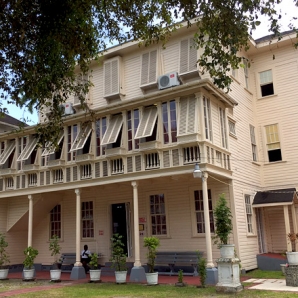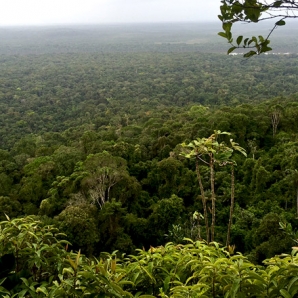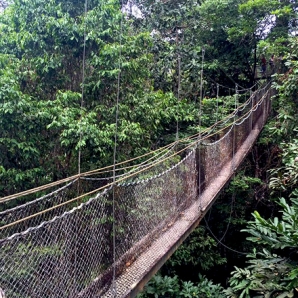Guyana Nature Experience
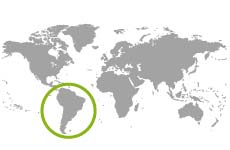
Georgetown | Kaieteur Falls | Iwokrama | Turtle Mountain | Atta Rainforest | Surama | Annai | Karanambu | Rupuni River
This classic group adventure takes in many of the highlights of Guyana: visit Kaieteur and Orinduik Falls before travelling to Iwokrama for jungle hikes, boat trips, the Iwokrama Canopy Walkway, and the chance to see the elusive jaguar. Stay in the Makushi village of Surama before going into the savannahs in search of giant river otters, giant anteaters and black caiman.
16 päivää, perillä 14 yötä
Alkaen 6 590 €, 2hh:ssa
Ota yhteyttä matka-asiantuntijaan puhelimitse, sähköpostitse tai online chatilla.
Puhelin: 0207 435 100 (asiakaspalvelun puhelumaksu 8,4 snt/min)
Sähköposti: info@aventura.fi
Tekstiviesti ja WhatsApp: 040 135 1001
Online chat toimistoaikoina (sivun alareunassa)
Matkainfo
- Mukana englanninkielinen matkaopas
- Kansainvälinen ryhmä
- Peruutusehdot B (kts. Aventuran lisä- ja erityismatkaehdot)
Esimerkkiaikataulu
Helsinki - Amsterdam 07.00-08.35
Amsterdam - Curacao 10.05-13.35
Curacao - Georgetown 21.50-00.05
Georgetown - Curacao 06.45-08.50
Curacao - Amsterdam 15.25-06.40
Amsterdam - Helsinki 09.55-13.20
Kaukolennot KLM
Matkan hinta on laskettu esimerkkilentoreitin mukaan. Mahdollisuus käyttää myös muita lentoyhtiöitä. Tiedustelethan vaihtoehtoja toimistoltamme.
- Lennot turistiluokassa
- Majoitukset kahden hengen huoneessa, mainituin aterioin (1hh lisämaksusta)
- Kaikki kuljetukset/lennot kohteiden välillä
- Retket ohjelman mukaan
- Englanninkielisen asiantuntevan oppaan palvelut.
- Käsittelykulu 35 €/hlö
- Tipit ja muut henkilökohtaiset kulut
- Mahdolliset viisumikulut (kts. huomioitavaa)
- Matkavakuutus
- Lisämaksulliset retket
- Muu mainitsematon.
Päiväohjelma
Day 1-2 | Flights Helsinki - Georgetown
Saturday arrival in Guyana. Transfer to Georgetown. Guests are met and transferred to Cara Lodge in Georgetown. Built in the 1840s and originally consisting of two houses, the hotel is one of the oldest wooden buildings in Georgetown. It has a long and romantic history associated with it and was the home of the first Lord Mayor of Georgetown. Over the years it has hosted many dignitaries including George V who stayed at the house in 1923 and planted the sapodilla tree in the front garden to mark the occasion.
Day 3 | Kaieteur Falls
Breakfast at the hotel, transfer to the in-town airport at Ogle Aerodrome for schedule flight over the Demerara and Essequibo Rivers and hundreds of miles of unbroken tropical rainforest to land at Kaieteur Falls, the world’s highest free-falling waterfall. At 228 meters, Kaieteur is nearly five times the height of Niagara Falls. Here we hope to find White-chinned and White-tipped Swifts swirling over the gorge, and the astonishingly colorful Guianan Cock-of-the-Rock
Day 4 | Iwokrama
0700hrs transfer to Ogle Airstrip for a flight across the rainforest to Annai. Breakfast at Rock View Lodge and then transfer by 4×4 vehicle or 4×4 Bedford Truck (converted with forward facing seats and canopy) to Iwokrama River Lodge.
The Iwokrama Rainforest is a vast wilderness of one million acres. This protected area was established in 1996 as the Iwokrama International Centre for Rainforest Conservation and Development. The Iwokrama Forest is in the heart of one of four last untouched tropical forests of the world – The Guiana Shield of North-Eastern South America. Iwokrama was established as a living laboratory for tropical forest management because the unsustainable utilisation of these forests will result in the extinction of half the world’s plant and animal species and unknown changes to global climate. This is a protected area with a difference – the full involvement of people. Iwokrama is exceptional among conservation organizations because it joins with local people in every aspect of its work. From research to business, Iwokrama ensures local economic and social benefits from forest use and conservation.
The forest is in the homeland of the Makushi people, who have lived here and used the forest for thousands of years. People are a vertical part of the ecosystem. The success of Iwokrama relies on the ownership of local people and the combined skills of specialists and communities. Iwokrama does what so many International conventions have acknowledged as best practice. It has begun conservation locally and integrated conservation into national development.
Afternoon free to explore the trails around the river lodge with an Iwokrama Ranger. Iwokrama is home to many bird species including Capunchinbird, Black Nunbird, Chestnut-rumped Woodcreeper, Amazonian Antshrike, Brown-bellied Antwren, Spot-tailed Antwren, Todd’s Antwren, Spotted Puffbird, Guianan Cock-of-the-rock, Green Aracari, Guianan Toucanet, Guianan Red Cotinga, Pompadour Cotinga, Rufous-crowned Elaenia, Bronzy Jacamar, Chestnut & Waved Woodpecker, Gray Antbird, and Strong-billed Woodcreeper. Three other Neotropical species in the Iwokrama forest of high interest are White-winged Potoo, Rufous Potoo, and Rufous-winged Ground-cuckoo.
Finally, after dark, we’ll set out on the river, in hopes of finding one or another of its four species of caiman, and listen for nightbirds such as Spectacled Owl, White-winged Potoo, Rufous Potoo, Long-tailed Potoo, Zigzag Heron or Blackish Nightjar. You may see one or another of the four species of caiman, and most certainly snakes including Cox boa, tree frogs and if lucky maybe some mammals. Maybe even a puma or capybara.
Day 5 | Turtle Mountain
Making an early start we will embark on the Essequibo and circumnavigate Indian House Island giving us a chance for dawn song on the river including five species of Tinamou, Marbled Wood-Quail, Band-rumped Swift, White-banded and Black-collared Swallows, and Guianan Streaked-Antwren before returning to the River Lodge for breakfast.
After breakfast, you will leave the river lodge for the journey to Turtle Mountain, and an exhilarating climb up the mountain to its summit at 935ft (approx. 360m). It takes 1 3/4hrs to walk up the mountain, but the effort is more than worth it for the breathtaking views over the forest canopy when you get there and chances of Green Aracari, White Bellbird or a fly-by of one of five types of Eagles. This trail is also a great location for seeing Black Spider Monkey and Red Howler Monkey and if we are very lucky even a Jaguar. This pristine forest offers huge buttress trees and the endemic Greenheart, a highly sought after hardwood. Return to the River Lodge for lunch.
As the afternoon cools you set out on a boat trip to visit Kurupukari Falls to see the Amerindian petroglyphs (dependent on the water level). Return to the lodge.
Day 6 | Atta Rainforest
At dawn take a wildlife walk with an Iwokrama Ranger close to the River Lodge. After breakfast we will transfer you by 4 x 4 along the trail that is one of the best places to see the elusive Jaguar. The Iwokrama forest is rapidly gaining an international reputation for its healthy jaguar populations that seem not to be troubled by the appearance of curious humans. No promises, but many have been lucky! Along the road, we will watch for the myriad of bird species that frequent the forest edge, including Crimson and Purple-necked Fruit-crow, Crimson Topaz, Green Oropendula, Spotted and Guianan Puffbird, Scarlet and Red-and-Green Macaw, Blue-cheeked and Orange-winged Parrot and Gray-winged Trumpeter. This road is the only north – south access in Guyana and links the country to Brazil. Even so traffic is only very occasional and wildlife is often seen along the road, such as Agouti, Tayra, Puma, Tapir and Black Curassow.
The journey concludes at the Iwokrama Canopy Walkway where we can bird watch from the vantage of 30 Metres up in the canopy. Painted Parakeet, Rufous-throated Sapphire, Guianan Puffbird, Green Aracari, Waved Woodpecker, Pygmy Antwren, Guianan Streaked-Antwren, Dusky Purpletuft, Purple-breasted Cotinga, Guianan Toucanet, Pompadour Cotinga, Buff-cheeked Greenlet, Caica Parrots, and a host of crown specialists may come within our view. From this tree top vantage you can sometimes see Red Howler Monkeys and Black Spider Monkeys. The trails also have an interpretative walk with the trees named and you can learn about their varied uses in the Macushi culture. Deer and agouti are also regular visitors to the lodge. As dark falls on the Canopy Walkway, we will hope to see the White-winged Potoo.
Day 7 | Atta Rainforest
Although the forest around Atta Lodge is excellent for birds, the major attraction here is a 154 metre long canopy walkway which is only 750m from the lodge. The walkway has four platforms, the highest of which is over 30 metres above the ground, and these will allow us to get great looks at a range of canopy species, many of which we would struggle to see well from the forest floor. Amongst the likely highlights are Painted, Brown-throated and Golden-winged Parakeets, Caica Parrot, Guianan Puffbird, Waved and Golden-collared Woodpeckers and Spot-tailed, Todd’s and Ash-winged Antwrens.
The walkway is also an excellent place to look for various species of cotinga including the poorly known and range-restricted Dusky Purpletuft and if there are any suitable fruiting trees nearby, we stand a good chance of seeing this bird, as well as the more widespread Purple-breasted Cotinga.
Another area where we will want to spend some time is the clearing around the lodge, as this is one of the best places to see another of Guyana’s “must see” birds, the Crimson Fruitcrow. This species is seen here on a reasonably regular basis, as it often comes to feed in some of the nearby trees. The clearing is also a reliable site for Black Curassow as there is a family party which has become habituated to people and regularly passes through the clearing. With reasonable luck, we should be able to add this bird to the impressive list of species we hope to see around the lodge and walkway. During our two nights stay, another of our major targets will be the poorly known White-winged Potoo which, after dark, can be found both around the lodge and at the walkway.
Welcome the dawn chorus from the canopy walkway. Short-tailed Nighthawks settle in for the day, Swifts take to the sky, White throated and Channel-billed Toucans yodel, and Barred Forest Falcons call. The unusually timid Black Curassow can also be seen as at least one family party has become habituated and regularly feeds in the clearing of Atta Rainforest Lodge.
Day 8 |Surama
After breakfast travel by 4×4 vehicle or 4×4 Bedford Truck (convert with forward facing seats and canopy) to a trail in the Iwokrama Forest to hopefully see the amazingly brilliant Guianian Cock-of-the-rock. This trail is through interesting forest and the guides can show the use of the plants. Continue your trip onto the Amerindian village of Surama.
The village of Surama is situated in a small savannah, deep in the rainforest and surrounded by forest clad hills. It was here that Charles Waterton passed through in 1812 in search of the secrets of the useful Wourali poison known as Curare. Waterton was so stunned by this spot that he wrote in his memoirs “The finest park that England boasts falls short of this delightful scene”. Surama’s inhabitants are mainly from the Macushi tribe and still observe many of the traditional practices of their forebears.
On our arrival, we will receive a warm welcome from the local people and will be shown to our basic accommodation. Your guide will take you on a tour of the village. Visit the local school, medical centre and church along with some of the village houses. As the afternoon cools a local guide will escort you for a short walk on trails to observe the forest and bird life. See the forest through the eyes of your indigenous guide and learn about the medicinal plants and their uses in the Amerindian culture.
Tonight enjoy an educational walk to observe wildlife and experience the mystique of the forest after dark.
Day 9 | Surama
Rise before dawn for a walk across the savannah and then the exhilarating climb up Surama Mountain in the cool morning air. This is the best time to observe bird life along the trail. Breakfast will be served at a lookout point which affords incredible views across the village and savannah to the Pakaraima Mountains. Return to village for lunch and then take a three mile walk across the savannah and through the rainforest to the Burro Burro River. Your guides will then paddle you on the Burro Burro River for opportunities to observe Giant River Otters, Tapir, Tira, Spider Monkeys and many more species. Return to village for sunset.
Day 10 | Annai
At dawn take a hike in the foothills of the Pakaraima Mountains on the Panorama Trail where you might see Cinereous Mourner, Finsch’s Euphonia, Reddish Hermit, Rufous-bellied Antwren, Green-tailed and Yellow-billed Jacamar. The views across the savannah and villages as the sun rises are spectacular.
Today you can visit a nearby Amerindian village. Enjoy an explanation and demonstration of traditional cashew nut roasting. Finish the day with drinks around the pool.
Day 11 | Kuranambu
After breakfast transfer by 4×4 vehicle or 4×4 Bedford Truck along the road through the savannah and at the foothills of the Pakaraima Mountains. Jabiru Stork and Toco Toucan are often seen along this stretch of road, as are Red Howler and Spider Monkey. From Ginep Landing we take a boat trip on the Rupununi River to Karanambu Lodge. Depending on the river level, this trip offers an excellent opportunity to look for Giant Otters as there are several family groups which live along this stretch of the Rupununi River. Karanambu, a 110-square mile former cattle ranch, is the home of Diane McTurk, conservationist and a world-renowned expert on giant otters. Located in the North Rupununi, a region of southwestern Guyana known for its expansive wetlands and savanna, as well as its biological and cultural diversity. Settled in 1927 by Tiny McTurk, Karanambu was once a working cattle ranch and Balata collection station. It is now an eco-tourist destination known as The Karanambu Lodge. Karanambu encompasses of savannah, marshy ponds, riparian forest, and a 30-mile stretch of the Rupununi River. The North Rupununi of southern Guyana is an extraordinary natural and pristine area. The landscape is an integration of four ecosystem types: wetlands, savannas, rivers, and forests. The number of species found here is much higher than expected given its size. There are at least 600 species of fish, along with 600 species of bird, and over 200 species of mammals. Karanambu is located roughly in the middle of this beautiful and fascinating biological hotspot. Endangered species like the Giant Otter, Black Caiman, Jaguar, Giant Anteater, and Arapaima—all apex predators—are abundant. The seasonally flooded savannas and forests also draw substantial fish migrations. There may be as many as 700 species of fish at Karanambu — more than anywhere on Earth.
This region is rich in history, too. The North Rupununi is the homeland of the Makushi and earlier peoples dating back almost 7,000 years ago. Village neighbors include the Makushi villages of Kwaimatta, Massara, Yupukari, Toka, and Simoni. Several prominent explorers and naturalists have written about their experiences here, including Robert and Richard Schomburgk, Charles Waterton, Evelyn Waugh, Gerald Durrell, and David Attenborough. Lake Amuku, not far from Karanambu, was once considered by Sir Walter Raleigh, and later by Alexander von Humboldt, and others to be the location of Lake Parime on whose banks the golden city of “El Dorado” was said to be located. The romance of the Rupununi pioneers lives on at Karanambu. The compound has the flavor of an Amerindian Village. Because of the remoteness of Karanambu, staff live on site and the children can be seen and heard on the weekends and holidays when they come “home” from schools in the nearby villages of Yupakari, Kwaimatta and Massara. This feeling of community is further enhanced by the accommodations, which are traditionally made clay brick cabins. Each private cabin can accommodate two people and includes private bathroom and Verandah with hammocks. With both the river and the savannahs close at hand there is a wide variety of activities to be enjoyed at Karanambu. You are free to determine what you want to do based on your interests, the time of year and whether the guides have found anything especially unique and interesting to see. Two guided excursions are provided each day — one early in the morning and another late in the afternoon and into the evening. As well as being the coolest times to be out, these are usually the best times to see the different birds and animals. Trips may be on the river by boat, on the savannahs by Land Rover or along forest trails on foot to the different ponds in the area. If you are interested in birdwatching it will be largely in woodland patches or gallery forest along the river where we’ll hope to find such species as Spotted Puffbird, Striped Woodcreeper, Pale-bellied Tyrant-Manakin, Golden-spangled Piculet and Capuchinbird.
In the afternoon we will begin to explore the nearby grasslands, gallery forest and wetlands to look for many species including the oddest-looking members of the cotinga family, the Capuchinbird, the near-threatened Bearded Tachuri, Boat-billed Heron, Pinnated Bittern, Sunbittern, Sharp-tailed Ibis, Green-tailed Jacamar, Spotted Puffbird, White-fringed Antwren, Black-chinned Antbird and Rose-breasted Chat. We also intend to make a special effort to locate the Crestless (or Lesser Razor-billed) Curassow, however, this species is tough to find.
Late in the afternoon we will travel by boat to look for wild Giant River Otters and as dusk falls to the ponds to see the giant Victoria Regis waterlily, bloom at dusk. On the return trip we will spotlight for Black Caiman and birds and creatures of the night.
Day 12 | Kuranambu
This morning travel out onto the savannah to search for a Giant Anteater. We can explore Karanambu and its varied habitats, traveling by boat to certain localities up and downstream, and by Land Rover to one or another forest patch. Grasslands host Bi-colored Wren while forest patches host Ferruginous Pygmy Owl, Violaceous Trogon, Blue Ground-Dove, Plain-crowned Spinetail and Great Antshrike. This evening you could head out onto the savannahs after dark to look for night birds and on a good evening it is possible to see at least six species of nightjar and nighthawk including Nacunda, Least and Lesser Nighthawks, White-tailed Nightjar, as well as Double-striped Thick-knee.
Day 13 | Rupuni River
This morning explore the Rupununi River in search of Spotted Puffbird, Striped Woodcreeper and Saffron-crested Tyrant-Manakin and you may also see wild Giant River Otters, Black Caiman and Arapaima. Or in the event you did not see a giant anteater yesterday you can travel out to search the savannah.
Return to the lodge for breakfast. After breakfast transfer on the Rupununi River to Caiman House, we will be bird watching along the way to the Amerindian village of Yupukari and Caiman House. Caiman House is the hub of several participatory development projects, including the introduction of classroom libraries in all three village schools and an internet-enabled public library. Visitors may have the opportunity to meet local craftspeople, including the furniture builders at Yupukari Crafters, a nonprofit venture to create village jobs and generate income to sustain educational development.
Tonight enjoy a foray on the Rupununi River from Caiman House Field Station. As a guest you have the unique opportunity to support and participate in an ongoing field study of the Black Caiman (melanosuchus niger), the largest member of the alligator family and an endangered species. Guests will observe the capture from a separate boat, but will be offered the opportunity to assist in data collection. Caiman are weighed, measured, sexed and tagged before being released back into the river. The research has already discovered interesting information on caimans’ nests that was previously unknown.
During periods of high water it is difficult to capture Caiman so you will have another chance to enter the nocturnal world of the Rupununi River and associated gallery forests which offer an experience, and world of wildlife entirely different than those viewed on a day trip. Skilled guides will expertly escort visitors to meet elusive denizens of darkness by outboard powered boats, while interpreting the sights, and sounds of Guyana after dark. Just after darkness settles on the River many creatures emerge such as black caiman (to over 12 feet), spectacled caiman, tree boas, iguanas, frogs, and many fish species( i.e arrawana, piranha). Sleeping birds (kingfishers, small perching birds) nightjars, potoos, Boat-billed Herons and other aquatic birds, bats, (harmless) spiders, insects, moths, and more can be closely approached in way not possible during the hours of light. Less likely, but not rare inclusions for night viewing include possums, tree dwelling rodents, capybara and sleeping monkeys (esp. squirrel monkeys) amongst other mammals. Few nights pass without some unusual offering.
Day 14 | Georgetown
This morning we will have some time to visit the village, to learn about their way of life. Or go birdwatching in search of the many good savannah, gallery forest and river-edge birds found in the Caiman House area including Pinnated Bittern, Green-tailed Jacamar, Black-chinned Antbird and Capuchinbird. After breakfast take a flight back to Georgetown. Enjoy an afternoon Georgetown City Tour.
Day 15-16 | Flights Georgetown - Helsinki
Kohde-esittelyt
Guyana
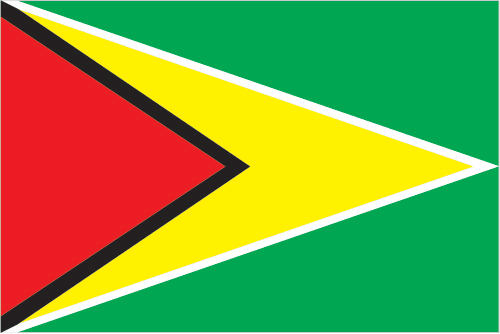
Pinta-ala
214 969 km²
Asukasluku
791 739 (arvio 2023)
Pääkaupunki
Georgetown
Kieli
Englanti (virallinen kieli)
Uskonto
Kristinusko, hindulaisuus ja islam.
Vientituotteet
Bauksiitti, sokeri
Hallitusmuoto
Tasavalta
Guyana on unelmien kohde luonto- ja seikkailumatkailijoille. Matkailijat voivat ihastella Amazonin sademetsää, kauniita vesiputouksia ja harvinaista eläimistöä. Maan sisäosasta suurin osa on trooppista sademetsää täynnä elämää. Ilmasto on kostean kuuma, johon kuitenkin merituulet tuovat oman helpotuksensa.
Georgetown
Guyanan pääkaupunki Georgetown sijaitsee Atlantin valtameren rannalla. Kaupungissa on noin 141 000 asukasta. Georgetownin keskustassa on paljon viihtyisiä bulevardeja ja siirtomaa-aikaisia puurakennuksia.
Huomioitavaa
Guyana - huomioitavaa
Viisumi
Suomalaiset eivät tarvitse viisumia Guyanaan. Passin tulee olla voimassa
6 kuukautta matkan jälkeen.
Rokotukset
A –hepatiitti ja keltakuume -rokotteita sekä riskiarvion perusteella malarian
estolääkitystä suositellaan. Keltakuumerokotustodistus on esitettävä maahan saapuessa, mikäli saavutaan riskialueelta. Tarkista myös että kansallisen rokotusohjelman
mukaiset perusrokotuksesi ovat voimassa (jäykkäkouristus, polio ja kurkkumätä).
Tarkistathan rokotusvaatimukset terveyskeskuksesta. Lisätietoja
saat Terveyden- ja hyvinvoinnin laitoksen matkailijan terveysoppaasta.
Vakuutus
Jokaisella matkalle osallistuvalla tulee olla voimassaoleva matkavakuutus, joka kattaa sairastapauksessa tai muussa vastaavassa tarpeessa terveydenhoitokulut. Tarkistathan oman vakuutuksesi voimassaolon sekä vakuutuksen peruutusturvan ehdot.
Huomioithan matkasi erikoisluonteen ja tarkistat vakuutuksen kattavuuden myös siltä osin. Monissa kohteissa vakuutuksen tulee olla voimassa myös yli 3000 metrin korkeudessa liikuttaessa ja tällöin kattaa myös vuoristotauti.
Monilla vaellus- tai sukellusmatkoilla tarvitaan laajempi vakuutus, joka kattaa esim. sukeltamisen tai jäätiköllä liikkumisen. Tarkistathan vakuutuksesi sisällön vakuutusyhtiöstäsi.
Ilmasto
Ilmasto on trooppisen lämmin ympäri vuoden. Guyanan kaksi sadekautta sijoittuvat marras-tammikuulle sekä touko-elokuulle. Paras aika matkustaa on Suomen syksyn ja kevään aikaan.
Sähkövirta
240 volttia, 60 Hz. Suomalaisiin pistorasioihin käytettäviin laitteisiin tarvitaan adapteri.
Valuutta
Guyanan dollari (GYD). Mukaan kannattaa ottaa Yhdysvaltain dollareita. Luottokortit käyvät maksuvälineinä hotelleissa ja hienommissa ravintoloissa. Käteinen on kuitenkin yleisin maksuväline. Pankkiautomaatteja on kaupungeissa, ja jotkut hotellit vaihtavat rahaa.
Tipit
10-15 % tippaus on yleistä, jos laskuun ei kuulu palvelumaksua.
Aikaero
Aikavyöhyke UTC-4. Kesäaika ei ole käytössä.
Turvallisuus
Taskuvarkauksia esiintyy. Yöllä yksin kulkemista tulee välttää. Yleistä
varovaisuutta kannattaa noudattaa koko matkan ajan. Kysythän ajankohtaiset tiedot matkanjohtajalta ja paikalliselta
oppaalta. Lisätietoja maassa matkustamisesta saat ulkoministeriön matkustustiedotteesta.
Ruoka ja
juoma
Guyanan ruokakulttuurissa
yhdistyvät perinteiset Karibian alueen ruoat sekä siirtomaahistorian
brittiläiset vaikutteet. Perusainesosiin kuuluvat maniokki, bataatti ja eddoe
sekä suuri joukko erilaisia hedelmiä kasviksia ja rannikolla mereneläviä. Aamiaisella
on usein tarjolla leipää, paikallisia hedelmiä ja puuroja ja juotavaksi teetä
ja kahvia. Lounas on päivän tärkein ateria. Iltapäivällä on brittiläiseen
tapaan iltapäivätee. Illallinen on pieni, yleensä leipää ja kasviksia.
Guyanalle tyypillistä ruokaa on Guyana pepperpot lihamuhennos, jossa on käytetty maniokista tehtyä cassareep-mehua. Maniokista tehdään myös leipää, muita muhennoksia sekä metemgeetä eli keittoa kookosmehussa ja mykyjen sekä kalan tai kanan kanssa. Guyanan rapukeitot muistuttavat kreolien gumboa. Muualta on tulleita ruokia ovat mm. Intiassa suositut dal bhat, curry ja roti, kiinalainen chow mein sekä Afrikassa suosittu herneet riisin kanssa. Guyanassa on usein lisätty muiden maiden ruokiin paikallisia mausteita ja yrttejä.
Guyanassa juodaan tuoremehuja, joita tehdään saatavilla olevista, paikallisista hedelmistä. Kaiken veden ja juoman tulee olla teollisesti pullotettua. Myös salaatti ja vihannekset tulee huuhdella pullotetulla vedellä. Ruoan tulee olla lämmitettyä tai keitettyä. Uudelleen lämmitettyjä ruokia tulee välttää.
Valmistaudu huolellisesti ja pakkaa
kevyesti
Jokainen
kilo vähemmän matkatavaraa pienentää kuljetusvälineen polttoaineen kulutusta.
Useamman matkustajan kohdalla tällä voi olla merkittävä vaikutus.
Henkilökohtaista hygieniaa varten kannattaa pakata mukaan matkakokoja tai
näytepakkauksia, jotka paitsi säästävät tilaa myös painoa. Näiden kohdalla on
kuitenkin hyvä huomioida mahdollinen aiheutuva jätteen määrä. Kohteesta
riippuen on tärkeää ottaa huomioon myös paikallinen vesitilanne – tarvittaessa
kannattaa suosia esimerkiksi hiustuotteita, jotka eivät vaadi huuhtelua.
Matkadokumentit ja -lukeminen elektronisessa muodossa säästävät tilaa ja painoa. Elektronisten laitteiden latausta varten on saatavilla esimerkiksi aurinkokennolla toimivia varavirtalähteitä. Esimerkiksi jalkineet vievät usein runsaasti tilaa matkalaukussa ja kerryttävät helposti laukun painoa. Mieti, mitä varusteita todella tarvitset matkaa varten ja jätä ylimääräiset tavarat kotiin.
Hiilijalanjäljen
kompensointi
Monilla lentoyhtiöillä on tarjolla
tapoja joilla voit kompensoida lennoistasi aiheutuvan hiilijalanjäljen. Myös
osa yhteistyökumppaneistamme tarjoaa mahdollisuutta kompensoida
hiilijalanjälkeä ja tehdä hyvää kohteessa. Lisätietoja saat toimistoltamme.
Ympäristöystävällinen matkailu
Yritämme toimia ekologisten periaatteiden mukaan ja kunnioittaa paikallisia ihmisiä, tapoja sekä eläimistöä kaikilla matkoillamme säästääksemme nämä elämykset myös muillekin.
